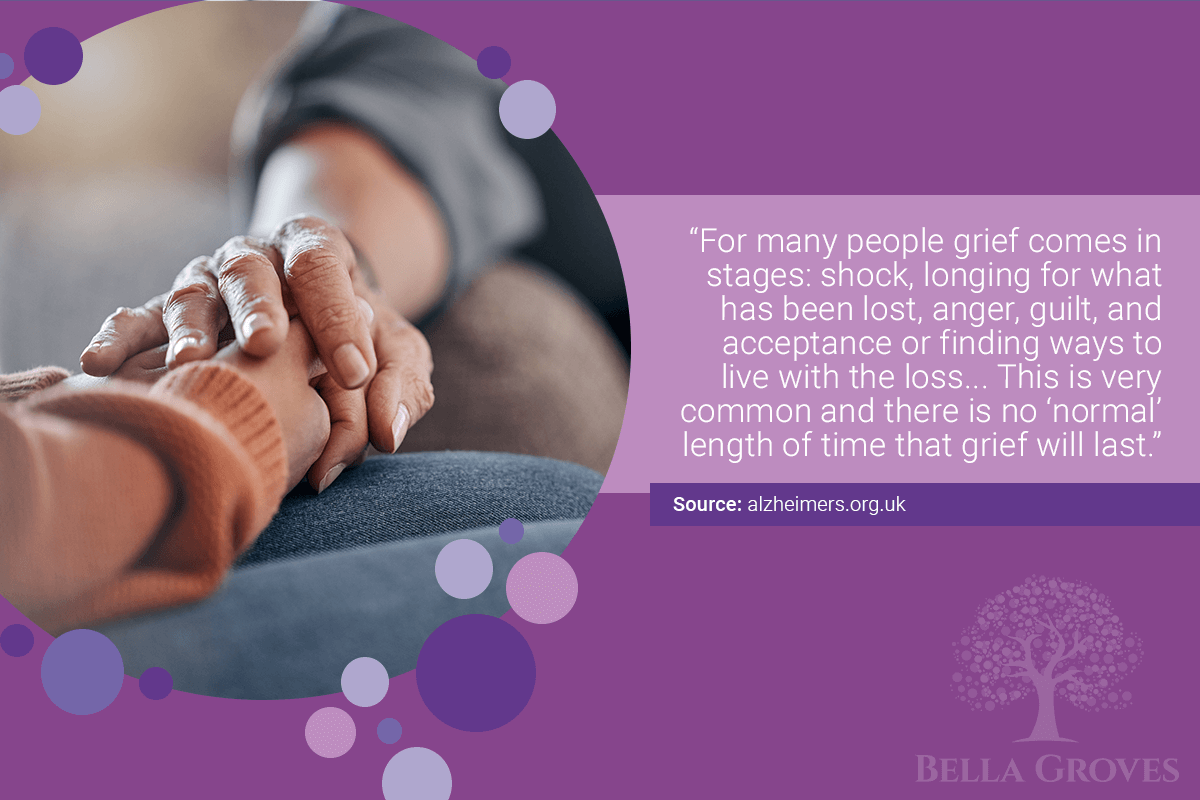
Connecting Beyond Words: Dementia Communication Techniques
Living with dementia brings numerous challenges, not just for those affected but also for their family, friends, and loved ones. One of the toughest hurdles is communication. Discovering alternative ways to connect beyond words can be life-changing for care partners and family members, as it can strengthen familial bonds and elevate the level of care you can provide.
At Bella Groves, our services go above and beyond memory care services in San Antonio. We’re committed to offering support and education to help families find solutions that work for their unique journey. Dementia will progress, but Bella Groves is here to progress with you.
Let’s dive into various dementia communication techniques to help foster meaningful interactions.
The Importance of Non-Verbal Communication
Sensory Stimulation and the Five Senses
As parts of the brain slowly decline, dementia can vastly impact a person’s five senses – touch, taste, sound, smell, and sight.
Engaging the five senses can be an effective way to connect with those living with dementia. Sensory activities such as enjoying a fragrant flower, listening to calming music, or tasting a favorite food can evoke memories and emotions. For instance, the scent of a rose might remind someone of a garden they once tended, or the sound of a favorite song could bring back cherished moments from their past.
These sensory experiences can create opportunities for connection and communication without relying on words, allowing for meaningful interactions even when verbal communication is challenging. Additionally, these activities can provide comfort and a sense of familiarity, helping to reduce anxiety and promote a sense of well-being.
The Power of Touch
Out of all the senses, touch can be a profound way to communicate emotions and offer comfort. A gentle hand on the shoulder or a warm hug can convey more than words often can. For those living with dementia, touch can be a soothing reminder of presence and care. It helps bridge the gap that words cannot always fill, providing a tangible connection that can evoke feelings of safety and affection.
With that in mind, it’s essential to pay attention to how your loved one responds to touch so that you can adapt to their preferences and comfort levels. While some people may appreciate a gentle pat on the back, others might find more solace in holding hands. Being sensitive to these nuances ensures that the touch is always a positive and comforting experience.
At Bella Groves, we also teach our caregivers to always offer touch and allow the other person to accept or initiate touch. This may look like offering an open palm near their hand and allowing them the time to process whether or not they would like to accept this point of connection.
Also, we take our cues for physical touch by what they initiate. For example, if after they have taken our hand they begin to run their thumb across our hand or place their other hand on top of ours, we may mimic those same motions. Or perhaps they may transition the hand-holding into a hug, which we would then reciprocate. Oftentimes, they will communicate their needs to us by initiating the physical touch they are seeking themselves.
Facial Expressions and Body Language
Facial expressions and body language are universal means of communication. A smile can brighten someone’s day, conveying warmth and friendliness, while attentive eye contact can show that you are engaged and present in the conversation. Gestures, posture, and even small movements can all contribute to the message being communicated.
Observing the facial expressions and body language of someone with dementia can provide valuable insights into their emotions and needs, even when they can’t articulate them verbally. These nonverbal cues can indicate comfort, distress, happiness, or anxiety, helping caregivers and loved ones respond more effectively to their needs. Understanding and interpreting these signals can significantly improve the quality of interactions and care for individuals with dementia.
The Role of Music and Art Therapy
Music Therapy
Music has a unique ability to reach parts of the brain that other forms of communication cannot. Playing familiar songs can trigger memories and emotions, providing a bridge to the past. Singing along or simply listening together can create a shared experience that deepens connections.
Experiment with different types of music. For example, an instrumental version or an acoustic cover of a popular song they know may engage their minds in a different way than hearing the same version they have always known. The tempo or pace of music may also have a big impact on their emotions. Naturally, a faster paced song may encourage energy and excitement, or it may inadvertently cause anxiety.
There are many board certified music therapists who specialize in working with people living with dementia. A simple search for them on social media platforms can open up a wealth of helpful tips and perspectives just like the ones shared in this blog.
Art Therapy
Art therapy offers another avenue for expression. Painting, drawing, or crafting can be therapeutic activities that allow individuals to convey their feelings and thoughts visually. These creative outlets can reduce anxiety and improve overall well-being.
Creating a Dementia-Friendly Environment
A supportive environment can significantly enhance communication with those living with dementia. Here are some strategies to consider:
Simplify the Space: Clutter and noise can be overwhelming. Creating a calm and organized space can help individuals focus and feel more at ease. Ensure that important items, like glasses or hearing aids, are easily accessible.
Use Clear Signage: Clear and simple signage can guide individuals through their environment. Labels on doors and drawers can help them find their way and maintain a sense of independence.
Routine and Familiarity: Establishing a consistent routine can provide a sense of stability and predictability. Familiar objects and activities can also evoke positive emotions and memories, making it easier to engage and communicate.
Understanding and implementing alternative dementia communication techniques can significantly improve the lives of those living with dementia and their care partners.
This will also have the added and important benefit of helping you feel connected to the person you are supporting. Too often, people mistakenly only think of dementia as memory impairment. Dementia causes changes to many areas of the brain, including communication. Just as you might modify your approach to communication with someone who has lost their hearing or vision, we must also modify our communication for someone who is experiencing brain changes due to dementia.
At Bella Groves, we specialize in providing memory care in San Antonio and are committed to helping families and care partners find effective ways to communicate and connect. We invite you to reach out to Bella Groves today, and together, we can make a positive impact on the lives of those living with dementia.


